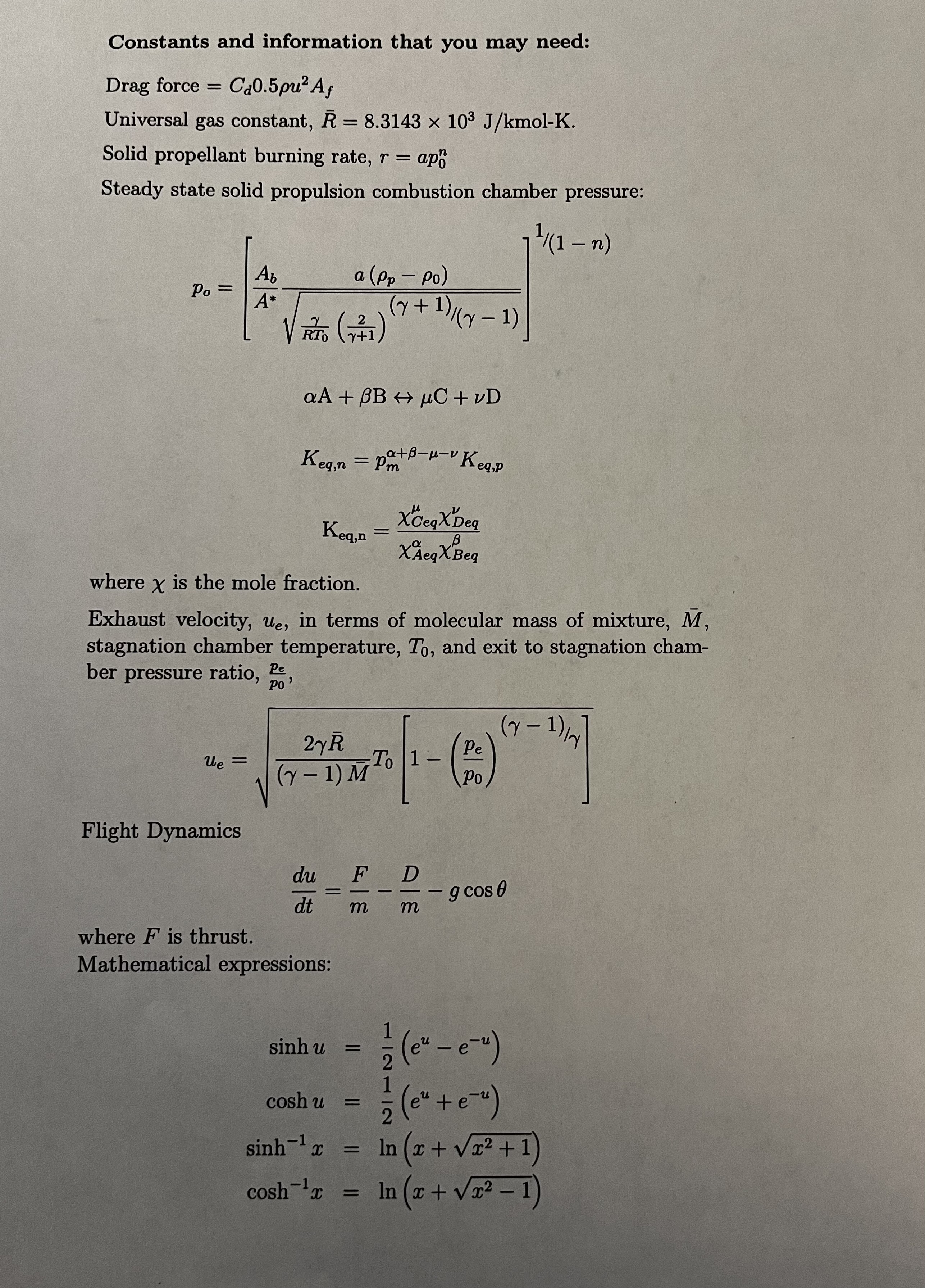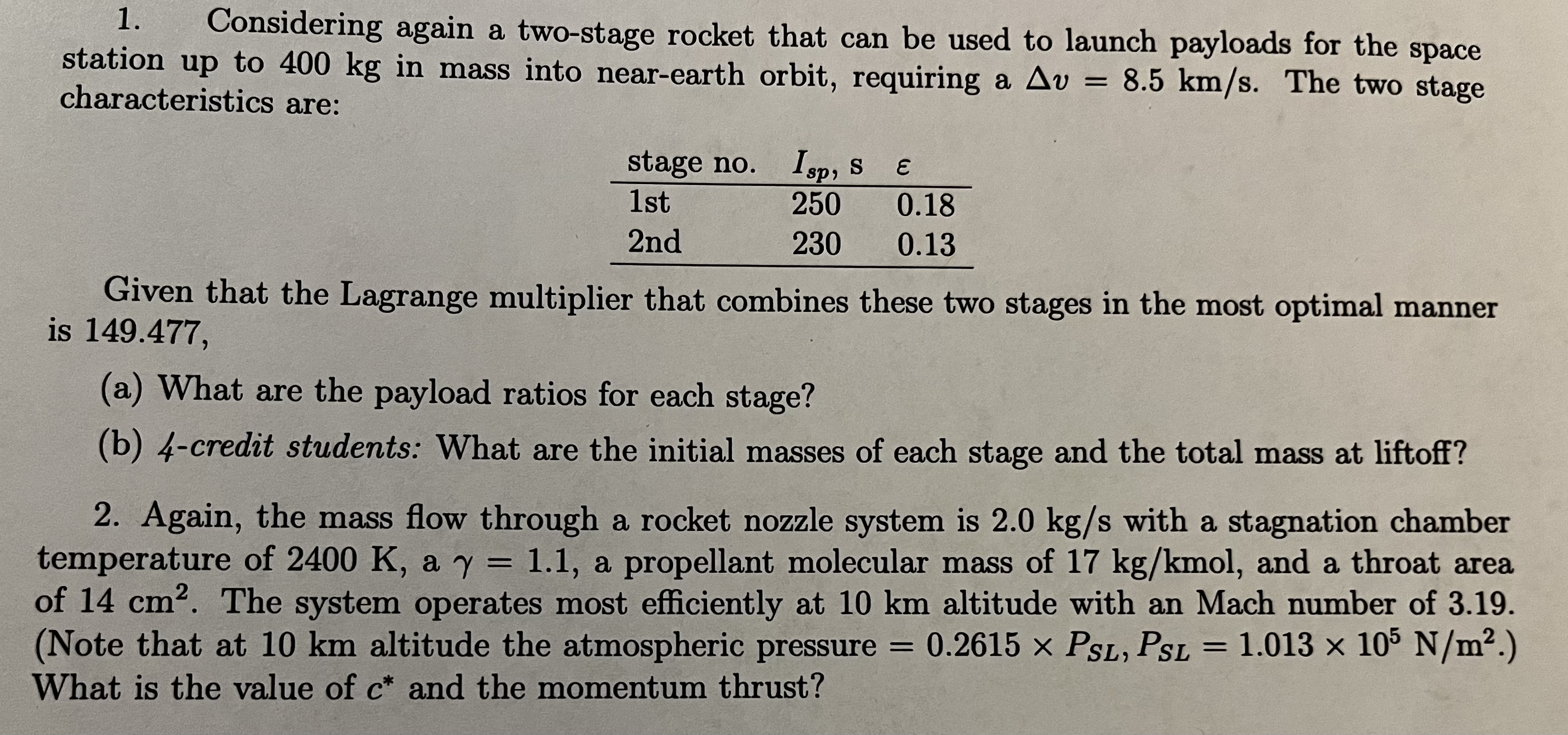Answered step by step
Verified Expert Solution
Question
1 Approved Answer
Constants and information that you may need: Drag force Ca0.5 pu Af Universal gas constant, R = 8.3143 x 10 J/kmol-K. = Solid propellant


Constants and information that you may need: Drag force Ca0.5 pu Af Universal gas constant, R = 8.3143 x 10 J/kmol-K. = Solid propellant burning rate, r = ap Steady state solid propulsion combustion chamber pressure: Po = Ue = Ab A* Flight Dynamics RTO (141) aA + BB C + vD a (pp - Po) (y + 1) Keq,n = pa+-- Keq,p XCeq X Deq XXegXBeg Keq,n du dt where X is the mole fraction. Exhaust velocity, ue, in terms of molecular mass of mixture, M, stagnation chamber temperature, To, and exit to stagnation cham- ber pressure ratio, e Po' 2yR (7-1) MTo 1 where F is thrust. Mathematical expressions: cosh u sinh-x cosh-x sinhu = F D m = = = = (-1) m - - Pe Po /(1 n) - (x - 1)/ g cos 0 1/2 (e" - e-") 1/7 (e" + e-") 2 In (x + x+1) In (x + x - 1) 1. Considering again a two-stage rocket that can be used to launch payloads for the space station up to 400 kg in mass into near-earth orbit, requiring a Av = 8.5 km/s. The two stage characteristics are: stage no. Isp, S 1st 250 2nd 230 E 0.18 0.13 Given that the Lagrange multiplier that combines these two stages in the most optimal manner is 149.477, (a) What are the payload ratios for each stage? (b) 4-credit students: What are the initial masses of each stage and the total mass at liftoff? 2. Again, the mass flow through a rocket nozzle system is 2.0 kg/s with a stagnation chamber temperature of 2400 K, a y = 1.1, a propellant molecular mass of 17 kg/kmol, and a throat area of 14 cm. The system operates most efficiently at 10 km altitude with an Mach number of 3.19. (Note that at 10 km altitude the atmospheric pressure 0.2615 x PSL, PSL = 1.013 105 N/m.) What is the value of c* and the momentum thrust? =
Step by Step Solution
There are 3 Steps involved in it
Step: 1

Get Instant Access to Expert-Tailored Solutions
See step-by-step solutions with expert insights and AI powered tools for academic success
Step: 2

Step: 3

Ace Your Homework with AI
Get the answers you need in no time with our AI-driven, step-by-step assistance
Get Started


